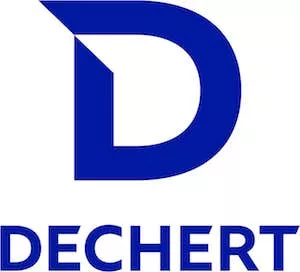- with Finance and Tax Executives
- in European Union
- in European Union
- with readers working within the Banking & Credit industries
Key Takeaways
- The Staff of the SEC's Division of Corporation Finance issued a statement clarifying that certain 1:1 USD-backed stablecoins do not constitute securities under federal securities law.
- Issuers and intermediaries for stablecoins that meet the Statement's criteria are not required to register the offer, sale, minting or redemption of such stablecoins with the SEC.
- The Statement emphasized that such stablecoins are marketed for making payments, transmitting money, and storing value, not as investments, and do not provide holders with rights to interest, profits or governance.
- The Statement does not apply to algorithmic stablecoins, yield-bearing tokens or coins redeemable for non-U.S. dollar assets.
The staff of the Securities and Exchange Commission's Division of Corporation Finance (the "Staff") released a statement on April 4, 2025, regarding certain U.S. dollar-backed "stablecoins"1 – crypto assets that are designed to maintain a stable value relative to one or more other assets. The Statement specifically discusses the securities status of stablecoins that are:
- Linked to the U.S. dollar.
- Redeemable at a fixed one-for-one rate.
- Backed by low-risk, liquid reserves (such as cash, Treasury securities, or registered money market funds) where the USD-value of the reserves meets or exceeds the redemption value of the stablecoins in circulation ("Covered Stablecoins").
The Staff noted that Covered Stablecoins are marketed solely for use in commerce, emphasizing their stability, reliability and accessibility for making payments, transmitting money and storing value. The Staff identified five key marketing factors that indicate that Covered Stablecoins are not offered or sold as securities:
- they are designed to have a stable value relative to USD;
- they do not entitle holders to receive any interest, profit, or other returns;
- they do not reflect any investment or ownership interest in the issuer or any third party;
- they do not afford holders any governance rights with respect to the issuer or the stablecoin; and
- they do not provide holders with any financial benefit or loss based on the issuer's or any third party's financial performance.
The Staff also noted that Covered Stablecoin issuers use the proceeds from sales to create pooled reserves. These reserves are:
- not used by the Covered Stablecoin issuer for operational or general business purposes;
- not otherwise lent, pledged or rehypothecated for any reason; and
- held in a manner designed not to subject them to claims of third parties.
Based on these observations, the Staff concluded that, when structured and marketed as described, Covered Stablecoins do not constitute securities under Section 2(a)(1) of the Securities Act of 1933 or the Securities Exchange Act of 1934. As such, issuers and intermediaries involved with the creation, offer or sale of Covered Stablecoins are not required to register those transactions with the SEC under the Securities Act or to fall within one of the exemptions from registration under the Securities Act.
Legal Framework:RevesandHowey
In its assessment of Covered Stablecoins, the Staff applied two legal tests: the Reves2 "family resemblance" test for debt instruments and the Howey3 test for investment contracts.
In Reves, the U. S. Supreme Court held that, because a "note" is one of the instruments listed in the definition of "security" under the Securities Act and the Exchange Act, there is a presumption that a note is a security. That presumption may be rebutted by showing that the note strongly resembles one of a few categories of commercial instruments not typically subject to the securities laws, including by referring to the following factors:
- The motivations of the buyer and seller.
- The plan of distribution for the note.
- The reasonable expectations of the investing public.
- The existence of another regulatory scheme, which significantly reduces the risk of the instrument, thereby rendering the application of the Securities Act and Exchange Act unnecessary.4
The Staff stated that Covered Stablecoins are issued for commercial purposes (for stability and as a store of value, rather than as an investment); they are not traded for speculative purposes; their holders have no expectation of profits and the existence of liquid, segregated reserves reduces overall risk. These factors, according to the Staff, rebut the presumption that these instruments are securities under theRevesanalysis.
The Howey test focuses on whether there is:
- an investment of money,
- in a common enterprise,
- with an expectation of profits, and
- based on the efforts of others.5
The Staff concluded that Covered Stablecoins are not investment contracts because holders seek stability rather than profit, do not rely on the managerial efforts of others and instead solely use the stablecoins for payments or value transfer.
The Staff emphasized that these conclusions as to security status under the Reves and Howey tests apply only to Covered Stablecoins, i.e., stablecoins that are designed to maintain a stable value relative to the U.S. dollar on a one-for-one basis, can be redeemed for U.S. dollars on a one-for-one basis and are backed by assets held in a reserve that are considered low-risk and readily liquid with a U.S. dollar-value that meets or exceeds the redemption value of the stablecoins in circulation.. Other stablecoins, such as algorithmic tokens, yield-generating products or tokens referencing non-U.S. dollar assets, could result in a different analysis.
A Stable Pattern of Statements
This Statement is the third crypto-related statement issued by the Staff this year, continuing the SEC's efforts to clarify the application of federal securities laws to crypto assets.6,7 Additional guidance may be forthcoming as the SEC continues to refine its regulatory approach to crypto assets under the new administration.
The Statement also indicates that the SEC does not see itself as an appropriate regulator for stablecoins and may likely clear the way for future regulatory action by bank regulators, who may view such assets as "near-money" or as potential cash substitutes.
The Statement could open the door for greater adoption of stablecoins in traditional financial infrastructure. While most crypto exchanges already use stablecoins as their preferred payment rail, broker-dealers, clearing firms and fund administrators may begin exploring fiat-backed stablecoins as forms of payment, especially for after-hours or cross-border transactions.
The Statement is also likely to provide a further regulatory edge to dollar-backed stablecoins, as opposed to stablecoins backed by other fiat currencies or commodities. If such regulatory clarity leads to greater adoption of Covered Stablecoins by crypto exchanges and other market participants, such adoption may lead to greater dollarization of the crypto markets. Through a recent Executive Order, President Trump has already indicated his opposition to central bank digital currencies (which are a form of digital money or monetary value, denominated in the national unit of account, that is a direct liability of the central bank), which could have provided competition to Covered Stablecoins.8This Statement is therefore likely to be a further step towards cementing the status of Covered Stablecoins within the "cryptoverse".
Footnotes
1. Statement on Stablecoins, SEC Division of Corporation Finance, (Apr. 4, 2025) (the "Statement").
2. Reves v. Ernst & Young,494 U.S. 56 (1990).
3. SEC v. W.J. Howey Co., 328 U.S. 293 (1946).
4. Reves v. Ernst & Young,494 U.S. 56 (1990).
5. SEC v. W.J. Howey Co., 328 U.S. 293 (1946).
6. See, Speeches and Statements, SEC.
7. See, e.g., SEC's Division of Corporation Finance Clarifies Stance on Meme Coins, (Mar. 6, 2025) and SEC Staff Issues Statement on Proof-of-Work Crypto Mining Activities, (Mar. 25, 2025).
8. Strengthening American Leadership in Digital Financial Technology, The White House, (Jan. 23, 2025).
The content of this article is intended to provide a general guide to the subject matter. Specialist advice should be sought about your specific circumstances.
[View Source]



